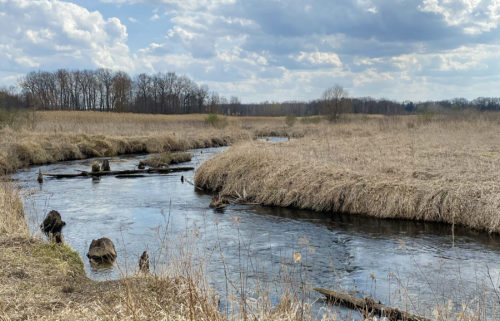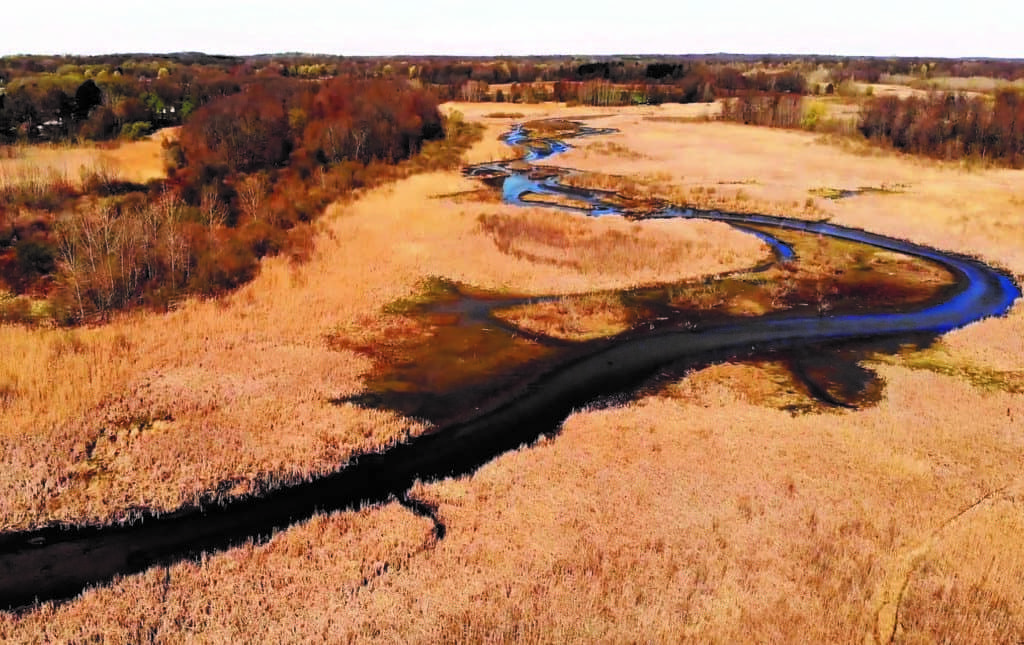
The Southwest Michigan Land Conservancy (SWMLC) announced Friday it has has been awarded Endangered Species Act funding to help acquire and create a nature preserve as the 425-acre property in Cass County.
Formerly known as Lake LaGrange, the property includes a large wetland that is adjacent and across the street from Edward Lowe Foundation’s wild, 2,000-acre Big Rock Valley. The project will help protect the fishery of the Dowagiac Creek as well as a nesting pair of endangered bald eagles – among other threatened and rare species.

SWMLC still needs to raise $250,000 to match those federal dollars, and to begin to build a stewardship fund that will care for the property over the long term. SWMLC is currently seeking additional grant funding and expects to launch a public fundraising campaign this summer. They plan to make the acquisition this Fall.
The LaGrange Valley property will be SWMLC’s largest nature preserve to date. Due to the sensitive, endangered species on the property, access will be limited to researchers, educators, scientists and other conservation professionals, so they may learn more about this special habitat and its rare species.
SWMLC is exploring the future possibility of a public viewing area to provide people with scenic views into the preserve to help connect them with the property, but without disturbing the rare and sensitive plants and animals that live there.
“We hope that the LaGrange Valley project will not only help to conserve a special piece of nature and its rare species, but that it will also help to raise awareness and understanding of the area’s native species and ecosystems, strengthen conservation partnerships, and help to support eco-tourism and nature-centered economic development, while also respecting the rural and agricultural history that characterizes this region,” said SWMLC Acting Executive Director Nicole Speedy. “SWMLC is grateful and excited for the participation and contributions of our conservation and community partners including the Edward Lowe Foundation, the Pokagon Band of Potawatomi, the Department of Natural Resources, the Cass County Conservation District, Cass County Parks and Recreation, and several individual community members, and we look forward to joining together with many more folks in the community to make this Cass County nature preserve a reality.”

Conserving the ecologically-important LaGrange Valley not only preserves native landscape and the special plants and animals that live there, it is also a significant step toward ensuring the continued water quality of Dowagiac Creek and its ability to support cold water fisheries upstream and down, according to the SWMLC. In addition, conserving this land will help to create vital connectivity along Dowagiac Creek that is essential to the strength and resiliency of the local landscape and the larger region, as a whole.
“LaGrange Valley will become even healthier with good stewardship, including addressing the tall invasive grass called phragmites that has rapidly spread throughout the wetland as water levels have decreased,” stated SWMLC Stewardship Director Mitch Lettow. “Removing this invasive plant will reduce the likelihood that it will spread to nearby properties, which should help to preserve property values and promote a healthier landscape overall.”
While SWMLC hasn’t yet conducted full botanical or wildlife surveys at LaGrange Valley, it is likely that it shares many of the same species as the adjacent Big Rock Valley, including several state-threatened fen plants, turtles, and snakes. SWMLC understands that the collective population of federally-endangered eastern massasauga rattlesnakes at LaGrange Valley and the adjacent Edward Lowe Foundation property may be the most genetically diverse in Michigan.

Creating and maintaining a connection between these two populations could be key toward the long-term survival of Michigan’s only rattlesnake, SWMLC said. The presence of these rare, native species indicates habitat that is extremely high-quality and capable of sustaining many sensitive species that can be easily impacted by habitat degradation or fragmentation.
(Photos courtesy SWMLC)






